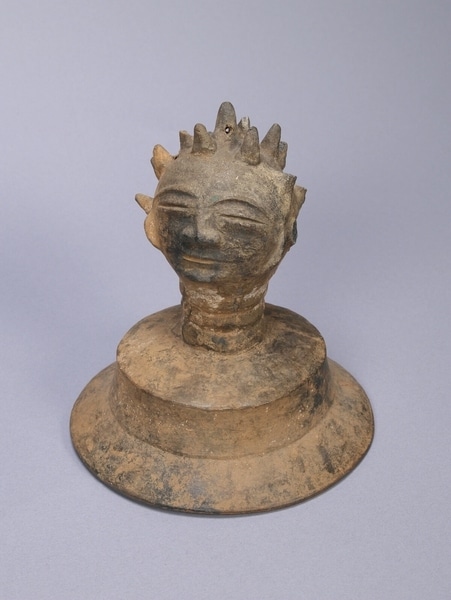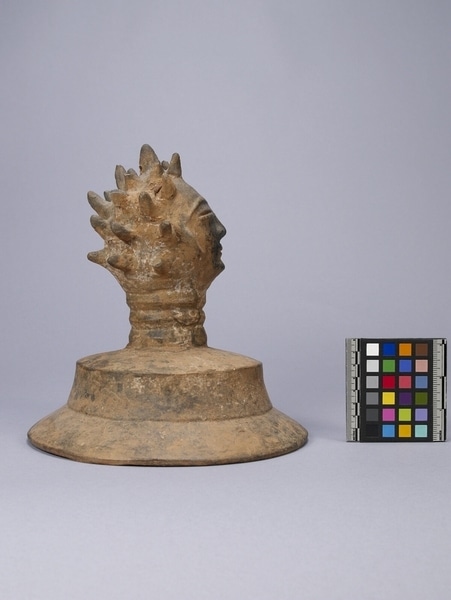Lid Item Number: K2.201 from the MOA: University of British Columbia


Description
Women's head, with typical woman's coiffure, on circular base. The eyes are slitted horizontally with slightly rounded eyelids. The eyebrows are curved and slightly upraised. There is a nose, a prim mouth, chin and pinched ears. The hair consists of conical-like protrusions extending outward from the head. The neck has three protruding bulges. The base is two-stepped.
History Of Use
Lid of funerary urn. Commemorative funerary terracotta heads, figures, and vessels (mma) accompanied the dead of the Anyi during funerary rituals, beginning in the 18th century. A mma was modelled, fired, and stained in preparation for the funeral of the deceased. After it was dressed and displayed for guests, the spirit of the deceased was invited to occupy the mma. The mma was then either deposited in the “village of the mma” (mmaso), an area on the outskirts of town, or on top of the grave of the deceased. The mma were annually visited at the beginning of the traditional New Year to pour libations and present food, and to pray to the ancestors that the mma represented. Mma depicted important individuals, such as chiefs, queen mothers, family heads, and their servants, as well as other citizens (except for infants). These funerary “portraits” operated as idealized representations of the deceased, rather than realistic. Funerary heads emphasized and depicted distinctive features particular to the deceased, such as hairstyle, facial hair, adornments, and scarification. Heads were consistently depicted with the eyes closed and head leaning back. Mma were almost exclusively produced by female artists. In the early 20th century, mass conversation to Christianity led many Anyi to abandon funerary terracotta practices. Later, commemorative funerary practices were renewed with different materials. Today, the dead are honoured with elaborately constructed masonry tombs.
Iconographic Meaning
Ringed necks indicated wellbeing and prosperity in Anyi mma.
Specific Techniques
The black staining across the lid may be attributed to the practice of staining mma during production, wherein the artist would have coated the mma with an indelible black pigment obtained from a climbing plant called atapéé.
Item History
- Made in Comoe, Cote d'Ivoire ?
- Owned by Abi Jones
- Received from Abi Jones (Unknown)
What
Where
- Holding Institution
- MOA: University of British Columbia
- Made in
- Comoe, Cote d'Ivoire ?
Other
- Item Classes
- ceramics
- Condition
- fair